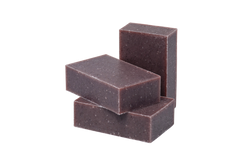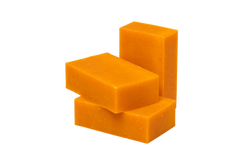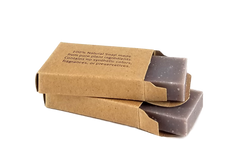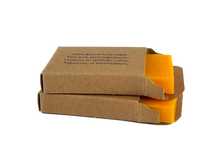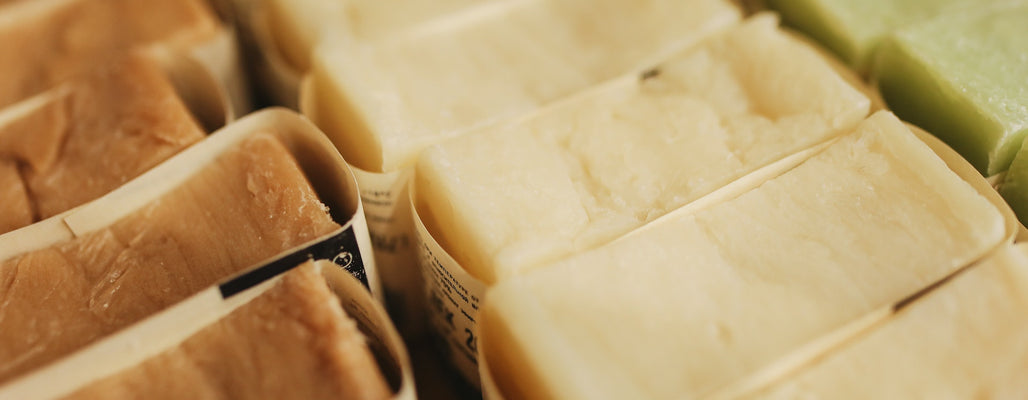
There are several methods to make soap, and every soap maker has their personal preference. The cold process method is one of the traditional ways of making soap from scratch. It’s often incorrectly called “cold press.”
In this blog, we’ll take a closer look at cold process soap making and discuss why bar soaps made by this method are a better alternative for your health and skin.
What Is Cold Process Soap?
All soap results from a chemical reaction called saponification that occurs between oils or fats and a strong lye base. For bar soap, the strong base is sodium hydroxide lye; for liquid soap, the strong base is potassium hydroxide, but the reaction is actually the same. At the end of this reaction, neither the oils nor the lye remains, and the result is soap, glycerin (a natural by-product of saponification), and water.
So what is cold process soap? As the name suggests, cold process soap is saponified at room temperatures without using any outside source of heat. In fact, it is an exothermic reaction, which means that the reaction itself generates heat. The saponification of cold process soap is mainly complete in the first 24-48 hours. After that, the soap is removed from the mold, sliced into bars, and has to undergo a process of curing for 4-6 weeks in a cool, dry place with good airflow.
Technically, cold process soap is safe to use after a few days. But the longer the cure time, the harder the bars become as excess water evaporates out of them. Well-cured soap bars last longer in the shower and become gentler on the skin.
At Botanie Soap, we always use the cold process method to make all-natural bar soap that we offer for private label use. Our collection of skin-compatible and nourishing bar soap includes a range of varieties that are great for skin care. For example, Lavender Bar Soap offers a calming experience because of the perfect blend of lavender and lavandin essential oils.
How to Make Cold Process Soap
Here is a quick overview of the soap making process. This is a simplified representation of our own production process at Botanie Soap. High-quality equipment and precise manufacturing standards enable us to ensure consistency from batch to batch.
- Measure lye and water in separate containers.
- Wearing protective gear, carefully add lye to water, and not the other way around, because it may have a volcanic effect. Stir well with a heatproof utensil until the lye has fully dissolved.
- Leave the solution in a safe place and allow it to cool to the target temperature for up to an hour. Most soap makers aim to have the lye solution at the same temperature as the oils.
- While the lye solution is cooling, measure oils and mix them, and then heat them at approximately 100 degrees Fahrenheit (38 degrees Celcius).
- Add the lye solution into the container of oils and stir them together until the thickness level called “trace” is reached. Then add essential oils and herbal additives according to the formula.
- Pour into soap molds and allow to harden for up 48 hours or until the soap is completely cool and solid.
- Finally, unmold the soap, cut soap blocks into bars, and set them aside to cure for about four weeks before selling. The cure time can differ based on bar size and environmental conditions. Humid climates, for example, will extend the time required.
Cold Process Soap Benefits
Due to the cure time, cold process soap requires more time until ready, which makes it more expensive from a business perspective. But, when well formulated, cold process soap benefits outweigh these downsides.
Cold process soap made from natural ingredients that don't contain any artificial chemicals or additives is good for the skin. Moreover, the ingredients are not heated, and that allows them to conserve their beneficial properties, resulting in more nourishing, skin-compatible soap.
Additionally, cold process soap gives soap makers complete control over ingredients. The process allows flexibility in developing the formula to customize each ingredient according to clients’ requirements. You can choose essential oils, add plant-based dyes to color your soap, and retain ingredients’ natural benefits.
The main benefit of a properly formulated cold process soap comes from the process called superfatting. Superfatting is when a formula is built to include oils beyond the amount needed for saponification. A superfatted bar has increased moisturizing and emollient qualities. The ability to customize a soap formula to include a superfat of desired oils and moisturizing levels is one of the great benefits of cold process soap.
Cold process soap making offers great flexibility, and if you are interested in custom production and higher volumes, you can rely on Botanie Soap. We can help you develop, prototype, and launch a custom soap line.
Besides, cold process soap making is eco-friendly. It doesn’t use external heat to complete saponification, requiring very little energy and reducing your carbon footprint. That means that soaps made using this method are better for the environment.
Final Thought
Cold process soap making is a traditional technique that doesn’t involve external sources of heat to complete saponification. This time-tested method is considered to be ideal for preserving the benefits of natural ingredients such as plant-derived oils, extracts, and herbal essences, many of which are sensitive to heat.
At Botanie Soap, we use the cold process method to make high-quality bar soap that is aesthetically appealing, naturally fragrant, and beneficial for overall skin health. All our bar soaps are cold process soaps, so you can’t go wrong no matter which of our products you choose.

